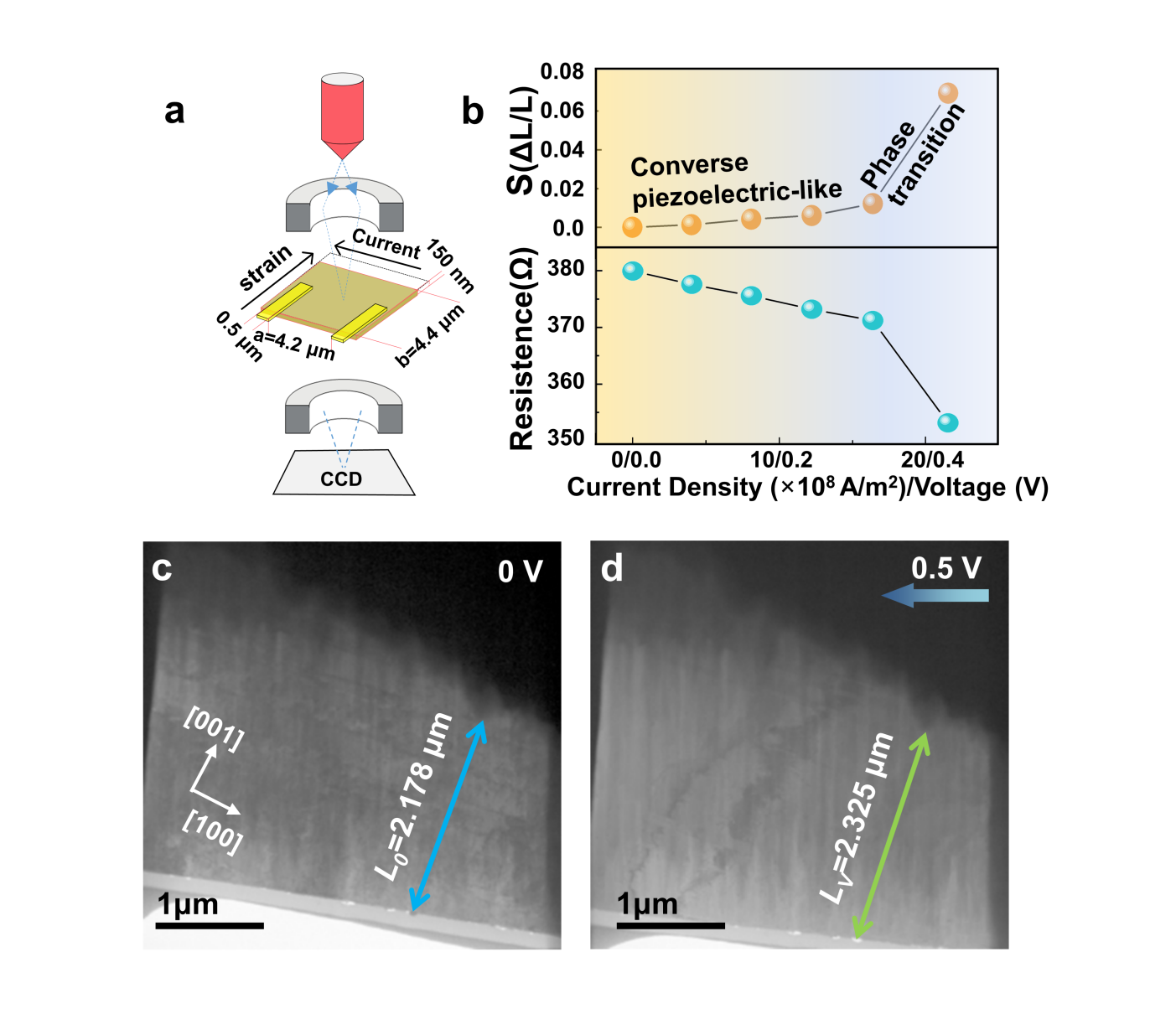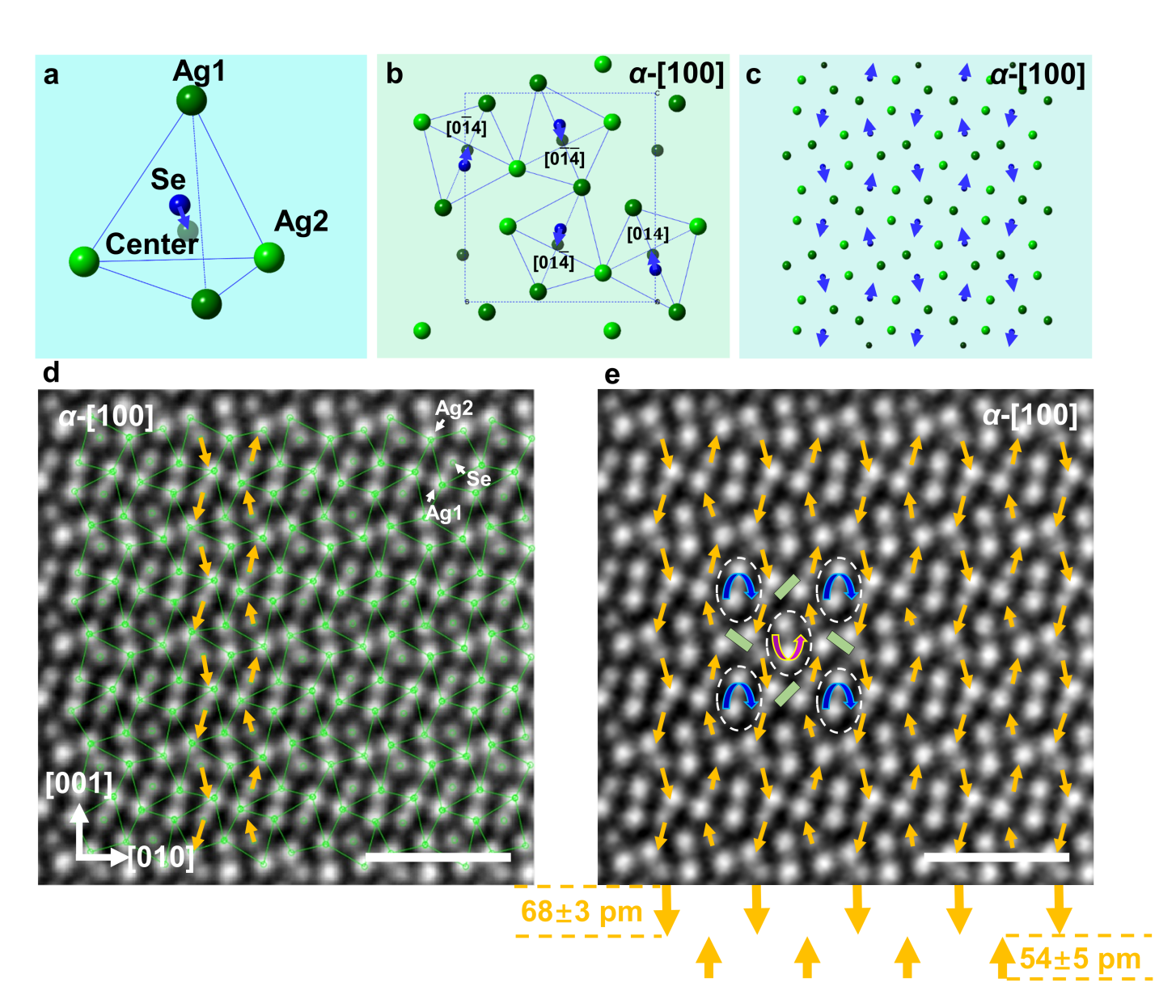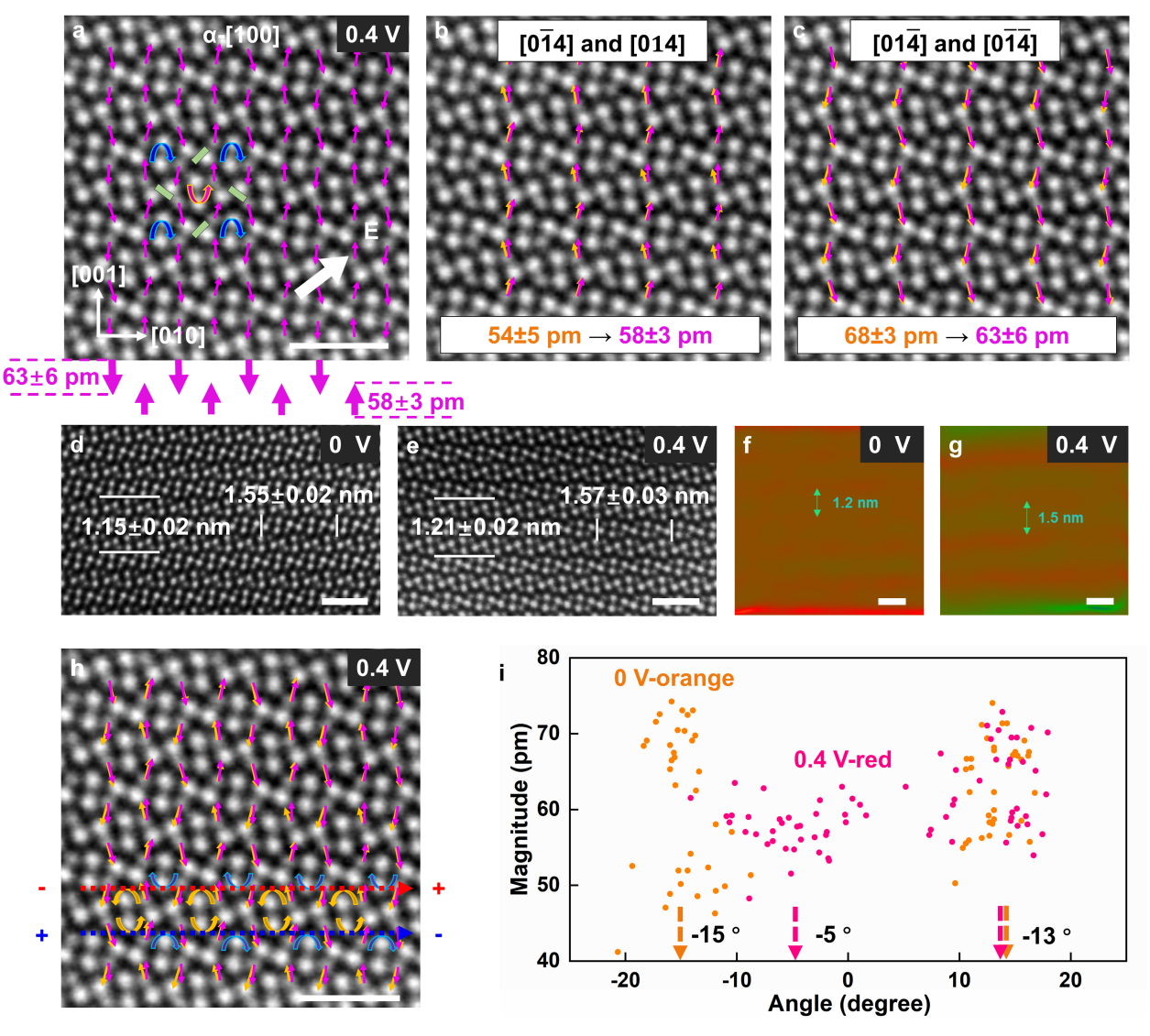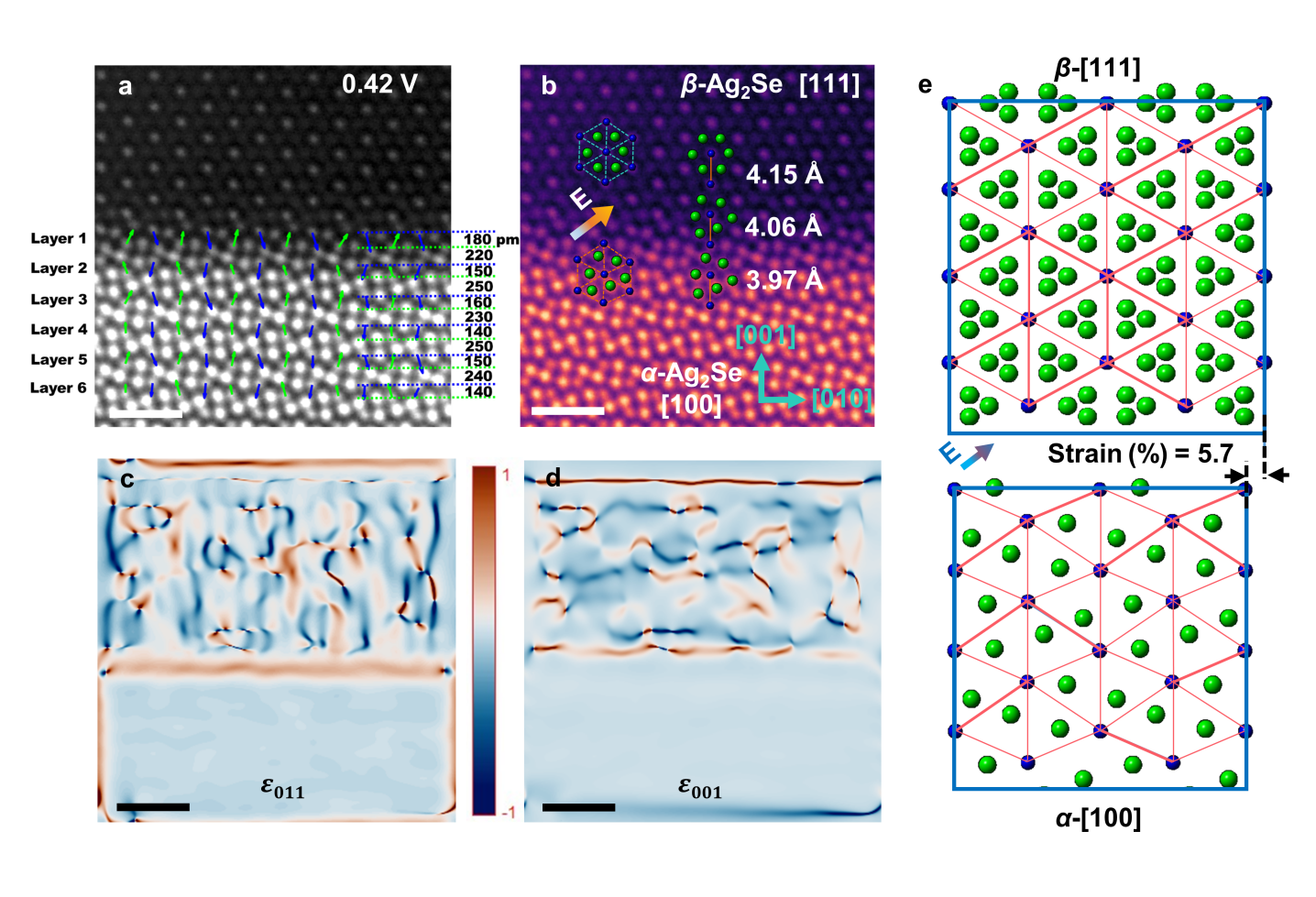Recently, Professor Wu Jinsong and Professor Tang Xinfeng’s research team at the State Key Laboratory of Advanced Technology for Materials Synthesis and Processing, Wuhan University of Technology (WUT), achieved a significant breakthrough in low-bandgap semiconductors. Their study, titled “Current induced electromechanical strain in thin antipolar Ag₂Se semiconductor,”was published in the prestigious journal Nature Communications, a leading journal under Nature Publishing Group.
The State Key Laboratory of Advanced Technology for Materials Synthesis and Processing is listed as the first corresponding institution, with Professor Wu Jinsong and Professor Shujun Zhang (University of Wollongong, Australia) are co-corresponding authors, and Dr. Luo Hao and Liang Qi are co-first authors.
New Insights into Electromechanical Coupling in Low-Bandgap Semiconductors
Electromechanical coupling has attracted extensive interest across material systems, yet its mechanisms in low-bandgap semiconductors remain poorly understood. These materials are crucial for nanoscale actuators, which require:
Large elastic strain under applied electric fields
High electrical conductivity in specific conditions
To explore these interactions, the research team conducted an in-depth study of antipolar Ag₂Se semiconductors, utilizing in-situ transmission electron microscopy (TEM).
Key Findings
For the first time, the study demonstrates that electric current can induce significant electromechanical strain in thin Ag₂Se films. Specifically:
Applied voltage range: 0V to 0.5V(~2.15×10⁹ A/m² current density)
Achieved strain: Approximately 6.7%
Using high-resolution in-situ TEM imaging, researchers directly observed microstructural evolution and phase transitions under current flow. Selected-area electron diffraction (SAED) provided precise insights into crystal orientation and phase changes, revealing new electromechanical strain mechanisms.
Implications & Applications
This breakthrough:
Uncovers a novel current-induced electromechanical strain mechanism in low-bandgap Ag₂Se
Provides a theoretical foundation for electromechanical coupling devices
Advances applications in flexible electronics, nanoactuators, and smart materials
Opens new avenues for next-generation nanoscale technologies
This discovery is expected to spark further innovations in semiconductor-based electromechanical systems.

Figure 1: In-situ TEM observation of electromechanical strain in Ag₂Se thin films

Figure 2: Spontaneous and antiparallel polarization in α-Ag₂Se

Figure 3: Current-induced dipole reconstruction and lattice strain

Figure 4: α→β phase transition interface and strain mechanism
Full
citation:
Hao
Luo, Qi Liang, Anan Guo, Yimeng Yu, Haoyang Peng, Xiaoyi Gao, Yihao
Hu, Xianli Su, Ctirad Uher, Yu Zheng, Dongwang Yang, Xiaolin Wang,
Qingjie Zhang, Xinfeng Tang, Shi Liu, Gustaaf Van Tendeloo, Shujun
Zhang*, and Jinsong Wu*. Current
induced electromechanical strain in thin antipolar Ag₂Se
semiconductor. Nature
Communications, 2025,
16, 1818.DOI:https://doi.org/10.1038/s41467-025-57057-5